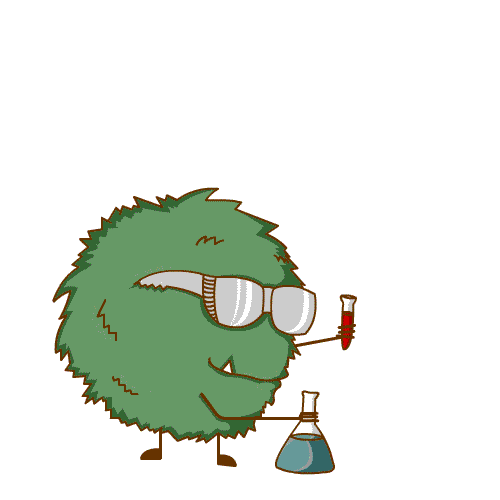The Innate Immune System (2/2) - Communication is Key
I’ve explained what kind of cells make up our innate immune system, I’ve detailed what our adaptive immune system does. What I haven’t explained is how those cells communicate. Because in contrast to my sketches, your immune cells don’t have mouths to speak.
The exact processes are complicated, really complicated, so I will give you a watered-down version of what happens.
Microorganisms have distinct certain structures on their surface. These structures (made out of proteins) allow immune cells to recognize them as foreign. To recognize the PAMPs, receptors (Pattern recognition receptors) are needed, in this case TLR and RLR with TLR being slightly more important. The different TLRs can recognize bacteria, fungi, protozoa and viruses. @suesa
But what happens when the TLR recognized something, a virus for example? After all, it isn’t enough to just notice something dangerous is happening.
If a virus is recognized by a TLR, a lot of stuff happens. The signal is transmitted through several receptors and kicks-off processes inside the cell. At the end of it all, there is NF-κB, a so-called transcription factor.
A transcription factor is something that causes a cell to use a specific gene and produce a specific protein.
Imagine it like this: You own a company that produces cars. Everything is working fine but suddenly, you notice that you’re running out of tires. You send an order to the company manufacturing the tires and they start producing some and then deliver them to you.
The order you place is the transcription factor, the blueprint the other company uses is the gene and the tires you’re delivered are the proteins.
But what protein is produced as a reaction to NF-κB?
Interferons are cytokines. Cytokines are the chemicals cells use to communicate with each other. These chemicals can be delivered back to the cell itself (autocrine), delivered to a cell close by (paracrine) or transported through the blood (endocrine).
What makes interferons so special?
Interferons are the signal that a virus infection has happened. The reactions to this signal are as follows:
• The cell stops producing Protein, effectively killing itself and the virus
• RNA viruses are prevented from replicating their genome
• The cell stops its cell cycle
• Viral proteins are broken down
• MHC present the virus on the outside of the cell to alarm T-lymphocytes
If everything goes as planned, this is enough to eliminate the virus.
Other important cytokines are the chemokines which are, for example, produced by macrophages as a reaction to bacteria. The effect is a dilation of blood vessels and a higher permeability, which allows immune cells to wander into the tissue. You can see this as the typical red swelling when you have an inflammation.
That’s the basics, kind of. Communication between cells is complex and the mechanisms of our immune system are even more complex but I hope that now, after all these posts, you have a better understanding of how your immune system works. It’s, after all, what’s keeping you alive!
Source:
Lecture “Immunology - Innate Immune System” by Dr. Barbara Walch-Rückheim
First picture was taken from pixabay.com, sketches by me.
Got a scientific topic which you want to see as a story? Leave me a comment!
You want to support scientists on Steemit? You are a scientist on Steemit? Join the #steemSTEM channel on steemit.chat and connect with us!
STEM is an acronym for Science, Technology, Engineering and Math


This communication is the bedrock of its function, and without it I think the immune system would just be like a car with no tires! Nice analogy on the car tires, it definitely passes the point across without having to swim through the ocean of jargons associated with immunology.
PS: I love the picture of duetting sheep, funny AF
I don't know if you've covered it before, I'd like you to do a post on razor bumps in black men.
Razor bumps in black men? What do you mean by that?
As a black man, we are the ones that experience bumps after shaving with razor unlike the white counterpart.
Huh, never heard of that. I'll put it on the list.
Ok. That's nice. Thanks
Great analogy with the cars! :)
It is always interesting to see how easily someone can explain science in a more understandable and “digestible” way.
I'm enjoying these little mini-classes. Keep it up :D
Thanks for sharing
You have no idea how difficult it was to break it down like this :D
But I'm happy people appreciate it!
Awesome!
I bet that it also helps you, a lot, in understanding these concepts at a lower level.
Win-win situation :)
True, studying for the exam will be a lot easier!
I'm glad you started posting stuff you learned in your class- I totally somehow didn't realize I could do that too, but now I'm doing it as well. (My delta geomorphology post was based on my SedStrat class.)
I always strive to inspire :P
At the very least, it makes research much, much less time consuming.
That's true
wow amazing @suesa. a detailed explanation. really very useful. i like your post.
Great post @suesa, and very easy to undertand even for those that are not really into science.
That was the goal, glad I succeeded!
Always war going in our body. everlasting. Most of the cases our defense system is able to prevent the attack but when/if fail, we start suffering from those attackers (microbes).
Nicely explained about the immunity process in our body.
Everything's connected on every level possible. It's how close you choose to zoom.
Thanks for the amusing share of knowledge!
Interesting post. Illustrated so that everyone understands. I struggle with bacterial streptococci and my immune system is constantly weak so I get sick easily.
key is needed for all member and thanks for your good info
strong writing,its so difficult to recognise it. but i like it